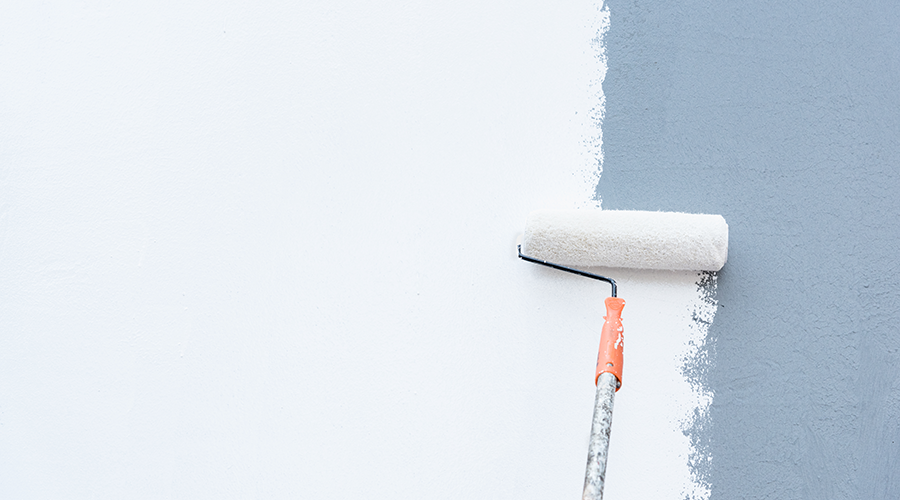There are currently over 6,000 hospitals in the United States, and the demand for more healthcare facilities grows each and every year. A lot is going on behind the scenes in terms of how a facility is designed, though. Designers, architects and facilities managers must work together to ensure their visions match and that they create a functional, comfortable and healing environment.
Well before patients are thought to be roaming the halls, facilities managers are choosing paint for the walls that will ease any tension that patient, visitors or staff may feel. Poor paint choices can have a detrimental effect on patient healing and staff productivity. By working with designers, they can give managers insight on how certain products can improve workflow and promote patient wellness.
Healthcare Facilities Today spoke with Ruthanne Hanlon, PPG color expert on how healthcare facilities managers can choose paints that will positively impact care for the long term.
Healthcare Facilities Today: When it comes to paint choices, are there certain factors that facilities managers working in healthcare facilities should prioritize first?
Ruthanne Hanlon: As a color expert, I believe that color considerations are extremely important as facility managers select the product that will be used in healthcare facilities. Because the colors that we surround ourselves with have been proven to have a substantial impact on how we feel both emotionally and physically, color can be an important aspect in recovery and healing. However, in addition to color, it’s also important to prioritize products that are washable, durable and mold and mildew resistant. The ability of the paint product to withstand frequent patient and faculty contact as well as frequent cleanings by maintenance staff will directly impact the longevity of the paint color.
HFT: How can paint color choices impact patient care? Are there any colors that should be avoided?
Hanlon: Colors have a great impact on our moods, so the psychology of color should be taken into consideration from the very beginning of the color selection process, especially in spaces as important as healthcare facilities. Because nature has proven positive impacts on both our physical and mental health, biophilia remains a strong design influence for healthcare spaces in 2023. Nature-based colors like Seriously Sand (PPG1085-3) and Birch Forest (PPG1134-5) work well within this trend and tend to have a calming effect in the spaces in which they are used. In the same way that natural colors can invoke a serene atmosphere, bright colors can be used to stimulate energy in a room. Bright palettes that feature colors like Atrium White (PPG1020-1), Firecracker (PPG1190-6) and Doodle (PPG1204-4) provide mood-boosting pops of optimism in pediatric facilities and physical rehabilitation centers to spur energy and encourage movement.
Light has a big impact on color. When choosing paint color, the availability of lighting in the space should be considered just as heavily as the psychology behind the color selection. For instance, if there are a lot of windows in a room, therefore, a large amount of natural light, the wall paint color should be softer than the color chosen in a room where there is less or no natural lighting. That’s because a bright color, like a bright white, when lit with too much natural light can become glaring and sterile. Lighting and color can work together to create the tone and mood of the room. For example, low lighting in conjunction with calming, natural colors, in recovery or restful spaces brings the restorative properties of the natural color out more than the color used alone with no regard to lighting.
HFT: How can facilities managers best protect a newly painted wall? How do you maintain longevity in high touch point areas?
Hanlon: Choosing a paint for a high traffic area can be especially challenging for healthcare facility managers because the product will need to be durable and washable to maintain longevity while enduring frequent cleanings to protect the patients - many of which could be immunocompromised - and staff that pass through the area.
PPG Copper Armor paint, powered by Corning Guardiant technology is proven to kill 99.9 percent of bacteria and viruses on painted surfaces, including SARS-CoV2, the virus that cause COVID-19, within two hours of exposure and for up to five years. Because Copper Armor offers premium wash and wearability and its antimicrobial features can help reduce the number of times an area needs to be manually cleaned with traditional sterilization methods, it has peaked facility managers’ interests as a solution that could reduce maintenance costs for facilities in the long-term.
Mackenna Moralez is the associate editor for the facilities market.

 UF Health Hospitals Rely on Green Globes to Realize Their Full Potential
UF Health Hospitals Rely on Green Globes to Realize Their Full Potential How Healthcare Facilities Can Be Truly Disaster-Resilient
How Healthcare Facilities Can Be Truly Disaster-Resilient TriasMD Breaks Ground on DISC Surgery Center for San Fernando Valley
TriasMD Breaks Ground on DISC Surgery Center for San Fernando Valley Bigfork Valley Hospital Falls Victim to Data Breach
Bigfork Valley Hospital Falls Victim to Data Breach AI-Driven Facilities: Strategic Planning and Cost Management
AI-Driven Facilities: Strategic Planning and Cost Management